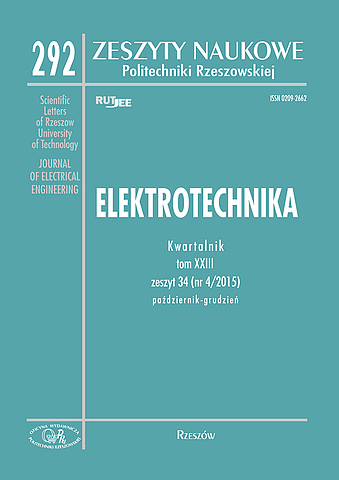Abstract
Prosumer - the recipient at the same time energy producer in the electricity. Adopted by the government draft law on the renewable energy is the beginning of the revolution associated with distributed energy production and use of low-carbon sources. Prosumer may be a natural person who produces electricity in plants with a capacity of less than 40 kW. According to the Act, prosumers will produce and sell energy do not have to run a business, and they do not need a license from them. It also means that prosumers can not connect prosumer activity of another business elsewhere. An important issue related to prosumer’s energy is functioning electricity network and billing of energy produced or consumed. Net metering is intended to appropriate monitoring and accounting of energy flows. OZE Act guarantees the profitability of the production of energy for their own needs and technical capabilities of grid connection. The efficient and effective operation of the system with the participation of prosumers, it is necessary to build the so-called smart grids. Smart power grids are able to effectively integrate the operation of all users connected to it in order to create the energy system, which is characterized by low loss and high quality and security of supply. Smart grids allow you to control the production, transmission and consumption of electricity. Electricity is provided by: production control, congestion management and supply disruptions, monitor the status of surplus energy and anticipation of failure. Such activities contribute to the reduction of maintenance costs. The article describes the role of the grid prosumer and prosumer energy potential, which is defined on the basis of the calculations.
References
[2] Wyniki Narodowego Spisu Powszechnego Ludności i Mieszkań 2011 Warszawa, marzec 2012 rok
[3] Słotwiński R., Mikroinstalacje 1 – 40 kW Czy już?
[4] http://www.ekonomia.rp.pl/galeria/532088,2,1139610.html [dostęp: październik 2015r.]
[5] Bugała A., Frydrychowicz-Jastrzębska G.: Pozycjonowanie modułu fotowoltaicznego w jednoosiowym układzie nadążnym. Electrical Engineering no.81, Poznan University of Technology Academic Journals 2015, pp 153-160.
[6] Kalda G., Smorąg A.: Stan obecny sektora energetyki słonecznej w Polsce i prognoza jej wykorzystania w przyszłości. Zeszyty Naukowe Politechniki Rzeszowskiej nr 283, Budownictwo i Inżynieria Środowiska z. 59 (4/12), Oficyna Wydawnicza PRz 2012
[7] Instytut Energetyki Odnawialnej. Wizja rozwoju energetyki słonecznej termicznej w Polsce wraz z planem działań do 2020 r., Warszawa 2009.
[8] http://www.optimapolska.com.pl/instalacje-prosumenckie/ [dostęp: październik 2015r.]
[9 ] http://www.cenapradu.strefa.pl/ [dostęp: październik 2015r.]
[10] Ustawa OZE, 2015 – Ustawa o odnawialnych źródłach energii z dnia 20 lutego 2015 r. (Dz.U. z 2015 r.poz. 478).
[11] Zużycie energii w gospodarstwach domowych w 2009 r., GUS, Departament Produkcji 2012, www.stat.gov.pl [dostęp: październik 2015r.]
[12] Dane katalogowe panel fotowoltaiczny firmy Schüco model MPE 250 PG 04; http://www.bode-lueneburg.de/fileadmin/produkte/pg04-modul_schueco.pdf [dostęp: październik 2015r.]





